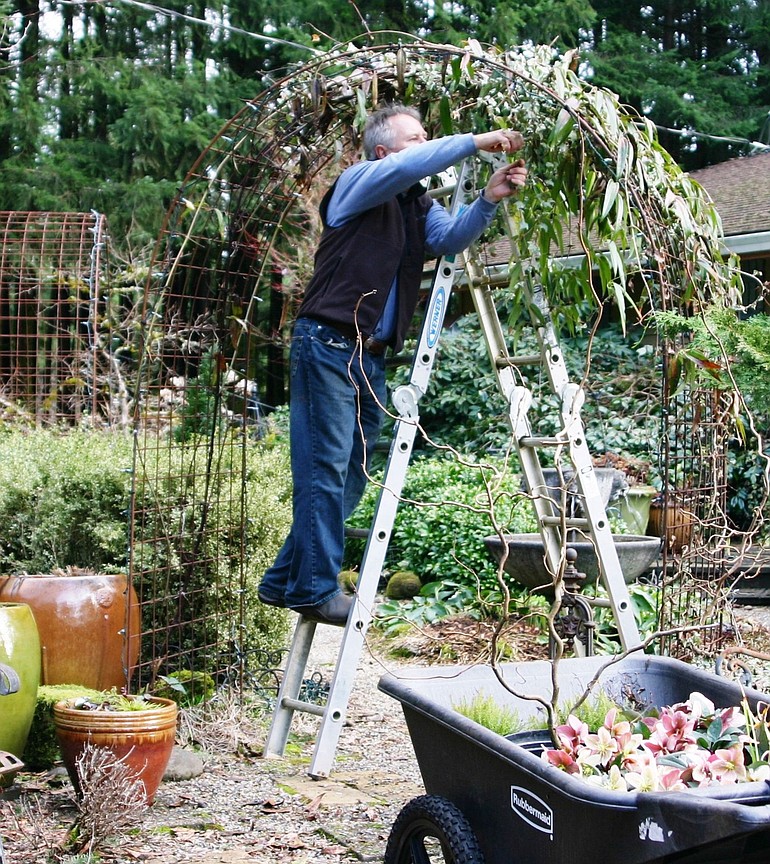One of the things I like best about winter is how it makes me feel when it is finally over. Even before spring’s arrival, I feel a resurgent sense of energy. Now, as winter draws to a close, it’s time to begin making plans for this year’s first seasonal garden projects. The more work you do in preparation for spring, the less overwhelmed you will feel two months from now.
I like to look at garden chores as editing a story I want to tell with my garden. Pulling the earliest weeds of the season is a first step in cleaning up the picture I hope to create. At this time of year, when many ground covers are still in a state of dormancy, flower borders show large patches of soil between plants. In a well-planned garden, these bare spaces take center stage with mass plantings of early blooming snowdrops, crocuses and daffodils.
Get a head start on the busiest season of the year. Remove the first weeds of the season now and you will be cleaning the slate for later blooming bulbs such as Darwin tulips and the ornamental onions known as alliums. Be careful not to dig too deeply or recklessly during these first weeding sessions. There is the danger of causing damage to emerging bulbs and perennials this early in the season.
I have found that weeding in the midst of a light, misty drizzle, makes the job a cinch. Weeds pulled in lightly damp soil will come out easily. It’s also more likely that you will get the whole weed and most of the root system, especially if the plant is growing in well packed, clay soil. If the weed has not formed seeds yet, shake any excess dirt from the roots and add to this year’s compost.
I have a large garden and, consequently, so much weeding to do that I often add weeds with seed heads to my compost. I make sure that they will be in the bottom of a large pile and put through a full cycle of composting which includes a period of high interior heat. If you choose, you can take the time to remove all flower and seed heads before adding any plants to your compost.
Tidying up the perennial border can be done in winter. Many gardeners, especially those who are always on top of their chore list, will have cleaned up the garden in late fall as soon as plants began to die to the ground.
Others hold off on cutting back seed heads and grasses to offer food and shelter for native wildlife. In addition, many plant collectors refrain from cutting back tender or half-hardy perennials early in the winter season, giving them the benefit of withered foliage to protect the crown of the plant from winter’s chill.
Seasonal pruning
This is a perfect time of year to rejuvenate deciduous shrubs. Prune summer flowering shrubs, especially those that have been slow to perform and have few blooms. Pruning now will coax late blooming plants to make new shoots and flower buds. Cut away the oldest wood, as well as any weak, diseased, damaged or poorly situated branches for an open shape. Do not prune spring flowering shrubs until after the plants have flowered.
Lilac, hydrangea and other tall, multistemmed shrubs that have grown too dense will benefit by cutting back one-third to one-half of the shoots for two or three years in succession. I personally recommend a yearly habit of pruning out one third of the oldest shoots. This way you keep the shrub to a manageable size from year to year. There will always be some older, flowering stems as well as new growth for plant vigor.
As you can see, spring and summer chores are lining up in the never-ending cycle of things to do in the garden growing season. As you edit the story of your garden, it’s up to you to decide which task to perform first and then the next and the next. As for me, all those open spaces in the early spring garden trigger an impulse to plant and transplant. We each develop our own particular methods. I happen to be the type that always goes for dessert first.
Robb Rosser is a WSU-certified Master Gardener. Reach him at Write2Robb@aol.com.



